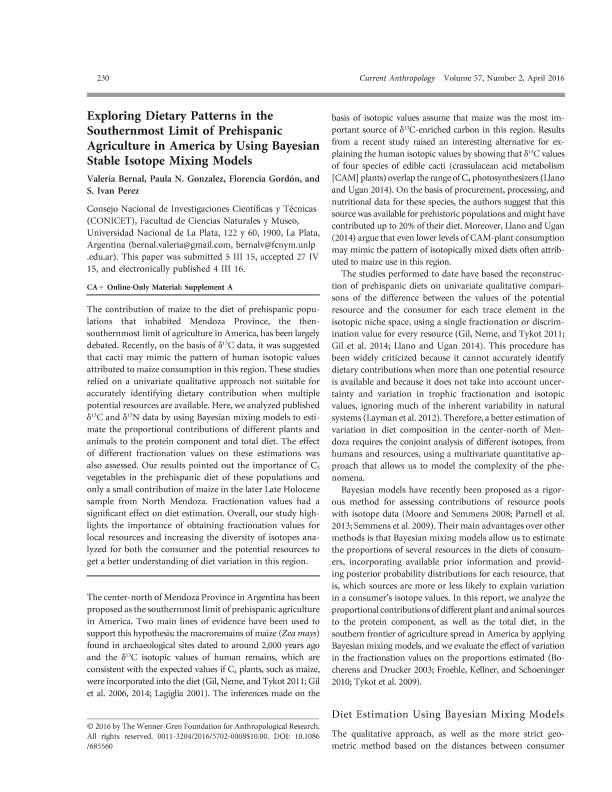Artículo
Exploring dietary patterns in the southernmost limit of prehispanic agriculture in america by using bayesian stable isotope mixing models
Fecha de publicación:
04/2016
Editorial:
University of Chicago Press
Revista:
Current Anthropology
ISSN:
0011-3204
Idioma:
Inglés
Tipo de recurso:
Artículo publicado
Clasificación temática:
Resumen
The contribution of maize to the diet of prehispanic populations that inhabited Mendoza Province, the thensouthernmost limit of agriculture in America, has been largely debated. Recently, on the basis of d13C data, it was suggested that cacti may mimic the pattern of human isotopic values attributed to maize consumption in this region. These studies relied on a univariate qualitative approach not suitable for accurately identifying dietary contribution when multiple potential resources are available. Here, we analyzed published d13C and d15N data by using Bayesian mixing models to estimate the proportional contributions of different plants and animals to the protein component and total diet. The effect of different fractionation values on these estimations was also assessed. Our results pointed out the importance of C3 vegetables in the prehispanic diet of these populations and only a small contribution of maize in the later Late Holocene sample from North Mendoza. Fractionation values had a significant effect on diet estimation. Overall, our study highlights the importance of obtaining fractionation values for local resources and increasing the diversity of isotopes analyzed for both the consumer and the potential resources to get a better understanding of diet variation in this region.
Archivos asociados
Licencia
Identificadores
Colecciones
Articulos(CCT - LA PLATA)
Articulos de CTRO.CIENTIFICO TECNOL.CONICET - LA PLATA
Articulos de CTRO.CIENTIFICO TECNOL.CONICET - LA PLATA
Citación
Bernal, Valeria; Gonzalez, Paula Natalia; Gordón, Florencia; Perez, Sergio Ivan; Exploring dietary patterns in the southernmost limit of prehispanic agriculture in america by using bayesian stable isotope mixing models; University of Chicago Press; Current Anthropology; 57; 2; 4-2016; 230-239
Compartir
Altmétricas




